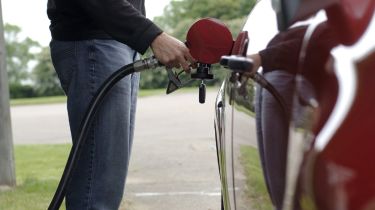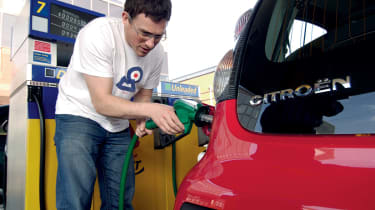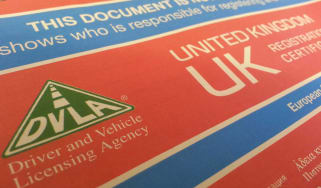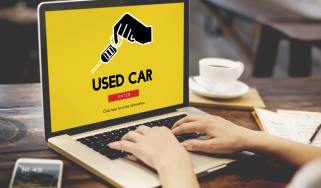Misfuelling explained: What to do if you put diesel in a petrol car or vice versa
Misfuelling your car can be a costly mistake but here’s what to do if you put the wrong fuel in your car

Pumping the wrong fuel into your car’s petrol or diesel tank is a common mistake any motorist can make. Extraordinary as it may sound, motoring organisations say that every three to four minutes here in the UK, another unfortunate driver will fill their car with the wrong fuel.
Misfuelling began making headlines in the Nineties, as diesel vehicles improved and more drivers switched from petrol-powered cars – something that really took off when the Government began incentivising diesel vehicles due to their better fuel economy and lower CO2 emissions. With many drivers now turning away from diesel, the risk of misfuelling has once again increased.
If it’s never happened to you, be grateful, but don’t pour scorn on those unhappy drivers who’ve put petrol in a diesel car by mistake. A moment’s distraction, tiredness, stress, or even plain old forgetfulness could see any one of us joining the statistics at our next trip to the filling station.
Mixing petrol in diesel fuel isn’t the end of the world as long as you realise your mistake at the pump. While you’ll be faced with the hassle and cost of getting your car’s fuel tank drained, the real damage can occur when you drive away – which could end up costing you thousands of pounds.
If you spot your mistake quickly as you’re filling up, there’s a chance you’ll get away scot-free. That’s because it’s commonly agreed you can mix up to 5 per cent petrol into diesel fuel without disastrous consequences. If there’s no room in the tank to top it up with diesel at the required 95 per cent ratio, you’ll need to call a breakdown service to get your car to a service centre where they can drain the tank.
What happens when you put petrol in a diesel car?
As long as you don’t turn the key in the ignition, there’s not too much to worry about other than having to confess your error to the garage attendant. That, and the £200 or so it usually costs for a breakdown van or similar to come and drain your tank.

Turning the key is the biggest mistake you can make, as even if you don’t actually start the engine, illuminating the dashboard lights could mean your fuel pump whirrs into life. It’s supposed to prime the engine with diesel before it starts, but instead could be sucking petrol up the fuel lines. This means they’ll need draining and flushing as well as the fuel tank. If you get as far as starting the engine, there’s a whole lot more that can go wrong besides.
Petrol in diesel: the worst-case scenario
Modern diesel engines employ lots of technology to eke out their impressive mpg figures and minimise emissions, including expensive high-pressure fuel pumps, and common rail injectors with very fine tolerances.
Those fuel pumps are lubricated by diesel fuel itself, as it passes through. Replace that diesel with petrol, and its solvent properties mean the lubrication effect is eliminated too. A fuel pump running without lubrication will soon begin to create internal friction as its metal surfaces grind together. It will then begin to disintegrate, and that in turn creates swarf – potentially microscopic particles of metal that can do even more damage to your car's engine further down the line.
It’s the diesel engine’s high-pressure injectors that are next in the firing line. They force fuel into the engine cylinders through very fine holes, and with a carefully engineered spray pattern. If swarf gets as far as the injection system it will simply block some or all of the holes, and a replacement common rail injector system will potentially cost thousands of pounds.
Further misfuelling problems can be caused by petrol’s corrosive qualities, which may degrade seals in a diesel system. At the very least, the entire system will need to be inspected and assessed for damage, as well as flushed through with a cleaning agent by your garage.
If you have driven with petrol in your diesel tank, don’t panic!
Driving your car, even a very short distance, on the wrong fuel isn’t always guaranteed to damage vital components in the ways described above. Misfuelling recovery specialists such as Fuel Doctor reckon many motorists have driven off forecourts without realising the dangers, only calling for help when their engines stutter and stall a few miles down the road – without long-term adverse effects.
However, driving a diesel car with petrol in the tank will cause serious and expensive damage in fairly short order, and the potential cost of extensive repair is not worth the gamble.
Even if you get away with running the engine or driving without damage, the incident will still be more expensive. That’s because draining and flushing the fuel lines and engine is a more laborious process than simply draining and flushing the tank.
If you do end up damaging your car through misfuelling, it may be worth checking your car insurance details, as some providers actually include misfuelling cover in their policies under an accidental damage clause. Others may offer it as optional cover, so if you’ve just changed vehicles to one with a different fuel type, it could be worth adding.
Petrol in your diesel car: our 5 top tips
- Stop fuelling immediately: If you’ve only put in a splash of petrol, some experts say there’s a chance you can get away with it – as long as there’s not more than 5 per cent petrol in your diesel. If you do want to risk driving on, stop frequently to top up the diesel and thus reduce the percentage of petrol in your tank as quickly as possible.
- Inform the filling station attendants: They will take it in their stride, as it happens to hapless motorists all the time. If they want you to move your car, ask them to help you push it – remembering to turn the key in the ignition just far enough to unlock the steering. Don’t illuminate the dashboard lights or start the engine!
- Call your breakdown service or a specialist misfuelling service: The filling station will likely have contact details for a suitable company if your breakdown service can’t assist. Don't be harassed into using an operator you're not comfortable with though, as you can find well-known nationwide operators using google and a smartphone.
- Wait with the car (as long as it’s parked safely): The tank can usually be drained and flushed in situ in around 30-40 minutes. Afterwards you’ll be able to fill it up again – hopefully with the right fuel this time – and drive away.
- Lock the car and leave it if you can’t wait: Don’t worry about locking the doors with central locking if you don’t want to wait with the car. It won’t affect the fuel system.
What happens if you put diesel in a petrol car?
You’ll have to be trying a little harder to put diesel in a petrol car, since diesel nozzles are larger than petrol ones, so in some cars they may simply not fit. But if you do manage to put diesel in a petrol car, thankfully it is far less serious than putting petrol in a diesel car.
Due to the lubricating properties of diesel, the fuel will coat the spark plugs and fuel system which can often lead to misfiring, the production of smoke and even the engine cutting out or failing to start at all. If you notice the mistake while refuelling or before putting the key in the ignition for the first time after filling up, the fuel tank will need to be drained and flushed – once this has been done, you can fill up with petrol as normal.
If diesel manages to get further down the fuel system and you start the engine or even drive the car, soot will very quickly build up on the spark plugs, the fuel injectors will become clogged and your engine will lose power.
If this happens, pull over safely and switch it off immediately. Like above, the fuel tank will be drained and flushed with a cleaning solution and the fuel lines, spark plugs, fuel filter and injectors will also need to be inspected. Thankfully, once the system has been properly cleaned, you will be able to fill back up with petrol and carry on driving, with the likelihood of lasting damage being minimal – the solvent-like petrol should eventually dilute and break down any small amounts of residual diesel.
Mitigating measures: reducing your chances of misfuelling
If you’re worried about misfuelling, having changed vehicles recently from diesel to petrol, then there are a few things you can do to reduce your chances of making a mistake.
Some manufacturers, such as Ford, have for quite some time now used a special fuel cap system that won’t allow misfuelling to begin with – they have an inhibitor that will only admit the correct fuel nozzle. This is more common on modern vehicles, though there’s no exhaustive list of all the cars that prevent misfuelling.
You can, however, buy aftermarket devices that do similar, mostly preventing the more damaging petrol-into-diesel fills by using a catch that won’t unlock with the narrower petrol nozzle, but will be triggered by the wider diesel one and allow you to insert the nozzle and fill up. The RAC sold one called Fuelsure around 15 years ago, although today there are several other alternatives.
As a cheaper alternative that doesn’t involve screwing an extra bit of plastic to your filler neck, however, you may be tempted just to apply a sticker somewhere inside the filler door, or on the filler cap itself, so it’s visible before you remove it, reminding you what fuel to put in the tank. Plenty of cars already have a sticker inside the door which isn’t always visible at first, but a sticker on the cap itself may just be the memory-jog you need at the pump to avoid an expensive mistake.
And if you’re travelling abroad, just remember that fuel pumps don’t always use the same colour as in the UK. Pumps in the US are similar to those here, but in France, for example, diesel pumps are yellow or orange rather than black. And if you’re on holiday in Japan or China, diesel is green and regular unleaded is red, so maybe avoid filling your rental car if you’re still jet-lagged after a long flight…
Now read about the most economical cars currently on sale…
Find a car with the experts










